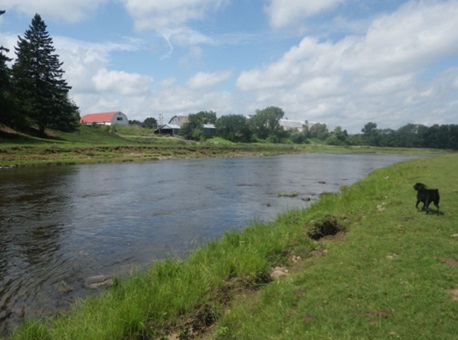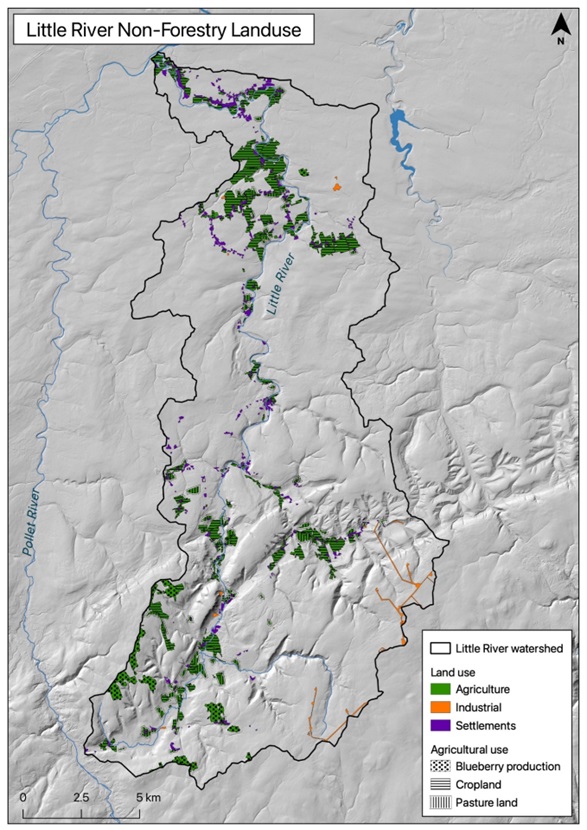Second Level Assessment- Current Impacts
Modern Agriculture
Agricultural Practices
Agriculture is the dominant non-forest land use within the Little River watershed. There are two major farms in the watershed (one of which is a dairy farm), as well as numerous hobby farms (Petitcodiac Watershed Alliance 2010). The dairy farm allows its cattle unrestricted access to the river with predictable consequences (Figure 4). Row crops and grains predominate across the watershed (Figure 5), representing about 75% of the agricultural activity (New Brunswick Department of Natural Resources 2023). The rest is divided nearly evenly between blueberry fields 12 % and pastureland 13%. The blueberry fields are concentrated at higher elevation in the remote upper reaches of the watershed, while pastureland, row crops and grains are distributed throughout at lower elevations along the valley floor, with the latter particularly concentrated within about a 2 km radius near and below Colpitts Settlement.














